Today Henry Darger, who died a few months after the discovery of his gargantuan work "In the Realms of the Unreal", is considered one of the greatest exponents of the so-called "art brut", that artistic production made by people often on the margins of society, as inmates and psychiatric patients. Illustrated by more than 300 watercolors, his creation was set in an alternate world where the atheist and slave nation of Glandelia and the Christian and free nation of Angelinia, led to freedom by the Vivian Girls, fought.
di Francesco Cerofolini

Henry J Darger he spent his entire life in total anonymity. To the tenants of the modest boarding house he lived in in Chicago, Henry was just a quirky, taciturn elder. Henry had no friends, he could sometimes be heard engaging in heated discussions with invisible interlocutors in his room. He always wore an old army coat and wore taped glasses. He attended four masses a day, claimed to be born in Brazil and it was not uncommon to find him rummaging in the garbage.
In the winter of 1972 Henry was slowly dying out in a retirement home. In that same period Nathan Lerner, the owner of the guesthouse at 851 Webster Street where Henry had lived continuously since 1932, had decided to empty Henry's room to make room for new tenants. Lerner, one of the few people Henry interacted with regularly asked the elder if he wanted him to take any of his few possessions to the retirement home. Henry ruled that he could safely throw it all away.
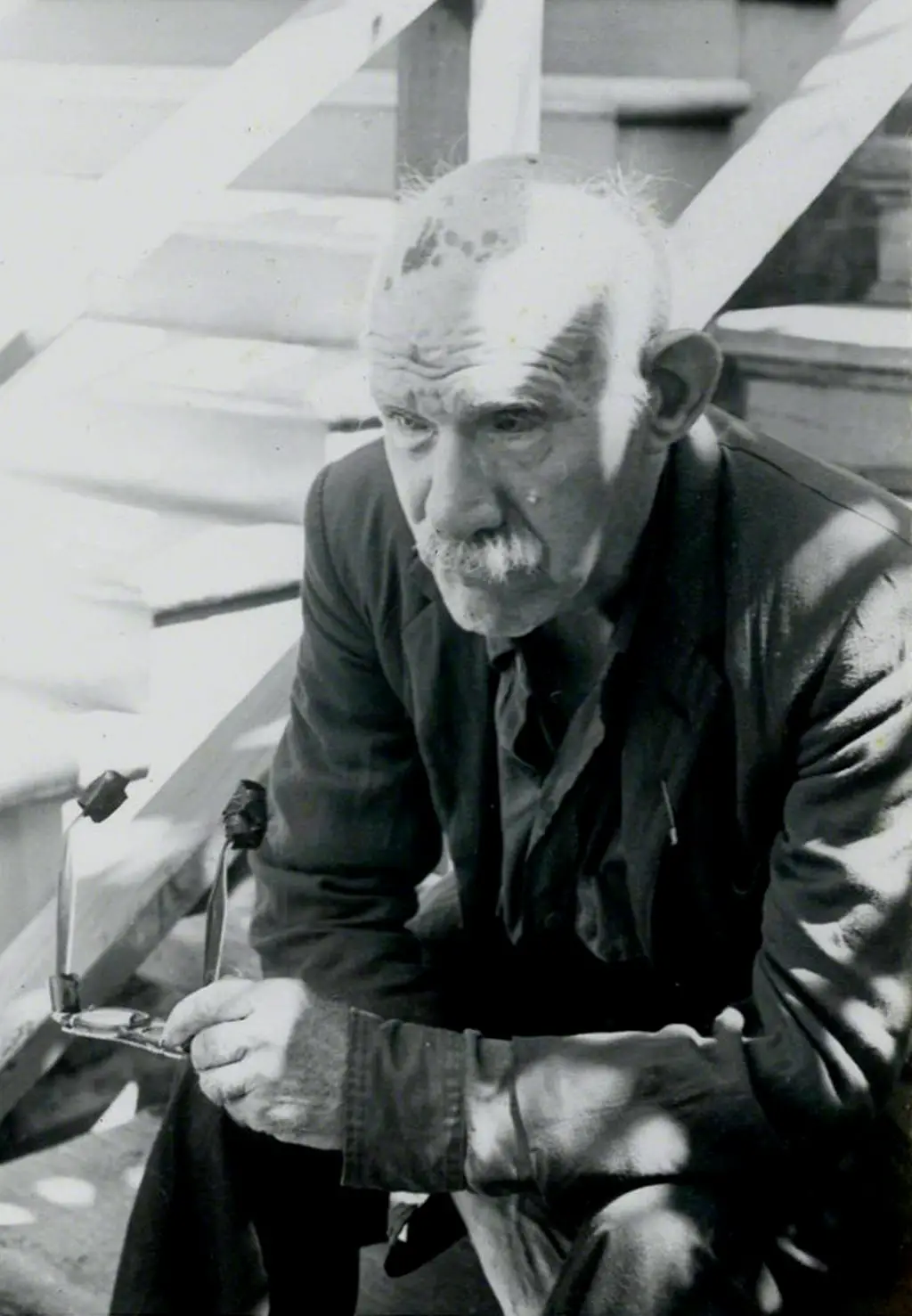
When Lerner entered the room he saw that it was overflowing with objects: broken toys recovered from the garbage, an exceptional amount of old newspapers, magazines and comics, religious images. But digging through Henry's few and meager possessions, Lerner made a surprising one. Buried in garbage and junk Lerner found several volumes, bound by Henry himself, which collected thousands and thousands of typewritten pages. Among this mountain of writings there was a novel entitled In The Realms of Unreal over fifteen thousand pages long, to the writing of which Henery had devoted most of her life. In addition, Henry had also made hundreds of drawings, watercolors illustrating scenes from the Neverending Story that he had put on paper.
In his solitude, unbeknownst to everyone, Henry had, sleepless night after sleepless night, year after year, created a fantasy world of rare imaginative power, both wonderful and disturbing. Lerner, an artist himself, immediately understood the value of his discovery, and since then he has worked to preserve it and make it known. If it weren't for him, his life's work would have gone straight to the trash.

Today Henry Darger, who died a few months after the "discovery" of his works, is considered one of the leading exponents of the so-called art brut, o outsider art, that is the artistic production carried out by people often on the margins of society, such as prisoners and psychiatric patients, who have created their works outside the system of fine arts (schools, museums, galleries etc…). His works have been exhibited all over the world and some pieces of him have been sold for thousands of dollars.
Darger's art has aroused strong reactions from critics, who despite recognizing his originality and creative energy, could not help but underline the disturbing and often morbid elements present in its production. The world imagined by Darger in his paintings is in fact a split world, split between two opposite polarities, a world in which bucolic scenes with a fairytale atmosphere and bloody representations of violence against children coexist.
There is a mystery underlying all of Henry Darger's art. What prompted him to devote much of his adult life to this titanic visual and literary work? What life experiences did you channel into his works? What anxieties were stirring in Henry?
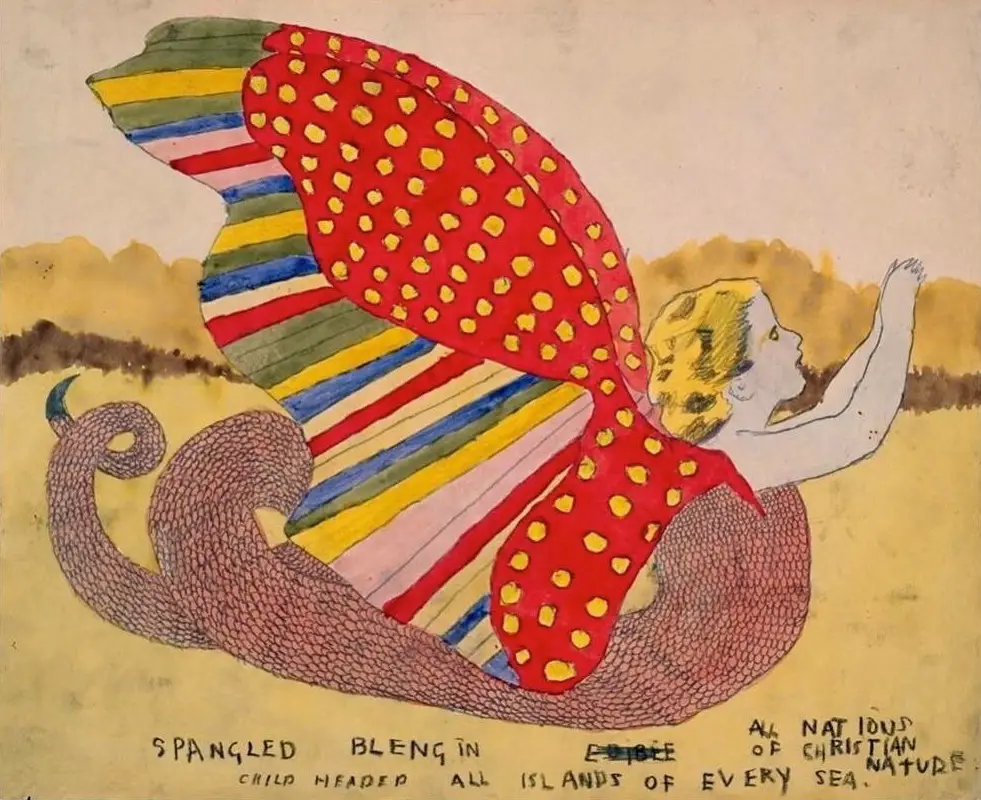
Un heart in the wrong place
Henry Darger was born in Chicago on April 12, 1892. Just four years later his mother died giving birth to his sister, who was immediately given up for adoption and whom Henry never got to know. Henry was left alone with his alcoholic father who barely guaranteed him the minimum to live. The only times his father worried about him, as Henry will recall in his memoirs decades later, were when he taught the little boy to read and when he punished him for setting fires for fun: Henry will feed for life. a mixture of fear and fascination with fire.
Henry grew up in the West Madison Street neighborhood, described at the time as "The refuge for tramps, prostitutes, degenerates and the rest of the scum of the earth", a neighborhood battered by poverty, alcoholism, drug addiction and tuberculosis, where you could enjoy every vice and excess for the right price. In this environment, children began their career in crime very early, especially the gangs they dedicated themselves to jack rolling, a practice that consisted in robbing drunken tramps on the sidewalks or alternatively in robbing homosexuals after having led them by deception to an isolated place with the promise of a sexual performance. Henry is likely to have had problems with the authorities before he was eight.
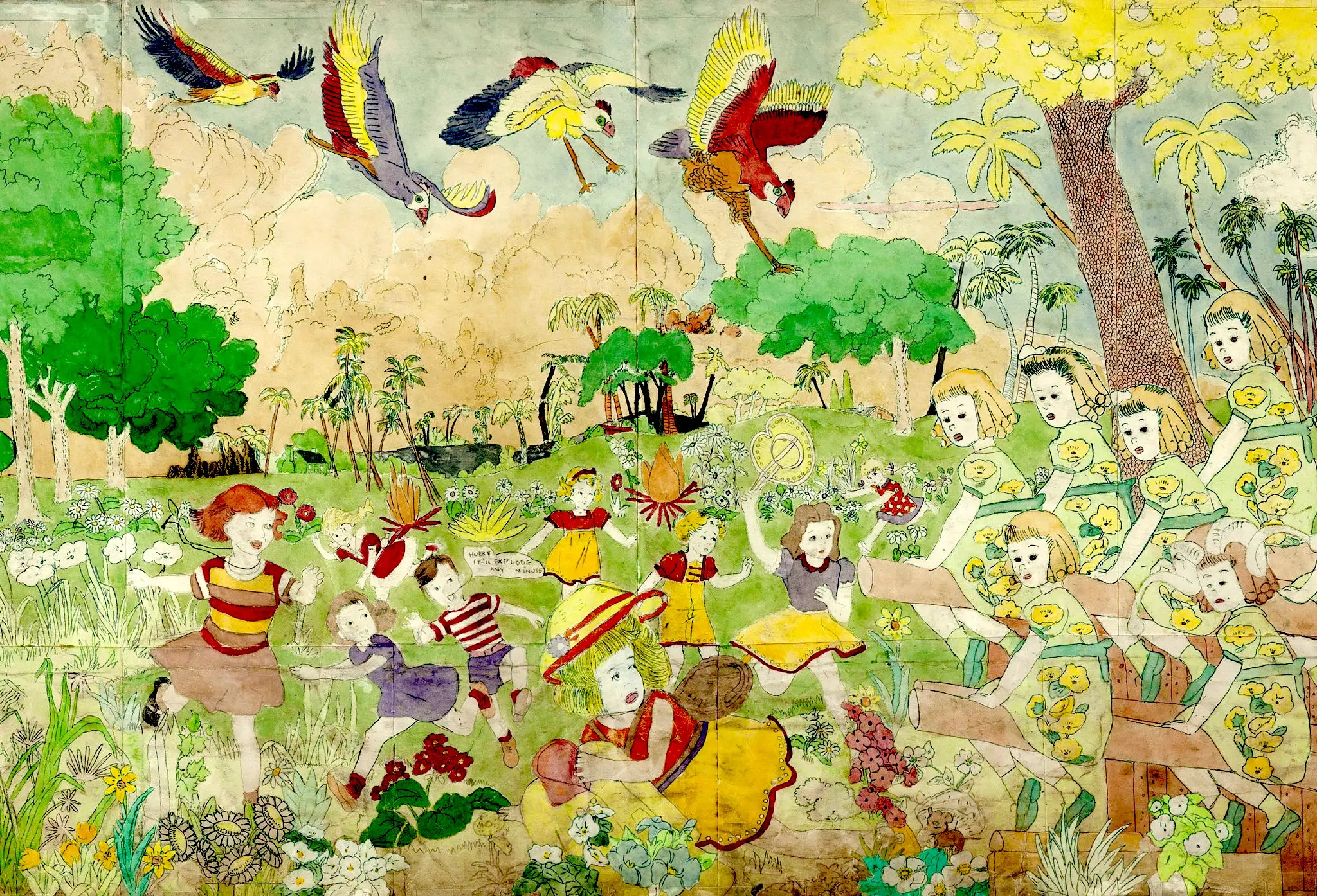
Henry immediately proved to be an impetuous child, with unpredictable reactions. In his memoirs of her he tells how once at school a nun took him back because she was cutting out pictures during the lesson and in response he scarred her face and arm with a knife she carried with him. Henry also harassed younger children at school. "I hated small children, the ones who were grown up just to stand and walk ". However suddenly Henry had a sort of epiphany, which he never managed to explain in rational terms, so his attitude towards children changed completely. Suddenly he realized that he loved them and wanted to protect them, an imperative that will accompany him throughout his life "They meant more to me than anything else in the world”, He will write years later. Little Henry also exhibited other bizarre behaviors. On one occasion he burst into tears because the snow he was looking at in the window had stopped falling, leaving his father to wonder why a child would cry because of the weather.
Henry, however, also proved to have brilliant intelligence and a lively mind. He loved telling stories and spent hours on the coloring books his father gave him for Christmas. When he finished those books, he went on to trace images from newspapers, a technique he had learned as a self-taught. At school he was passionate about history, especially that of American Civil War.
It soon became clear that Henry's father, elderly and sick, could not look after him, so the boy was sent to live at the Mission of Our Lady of Mercy, a religious institution that housed many young children whom the families could not provide. Here, despite his troubles, Henry attracted the attention of a teacher, Ms. Brown, who offered to adopt him for her father. Adoption could have given Henry, what he never had, a family and material security, but his father refused.
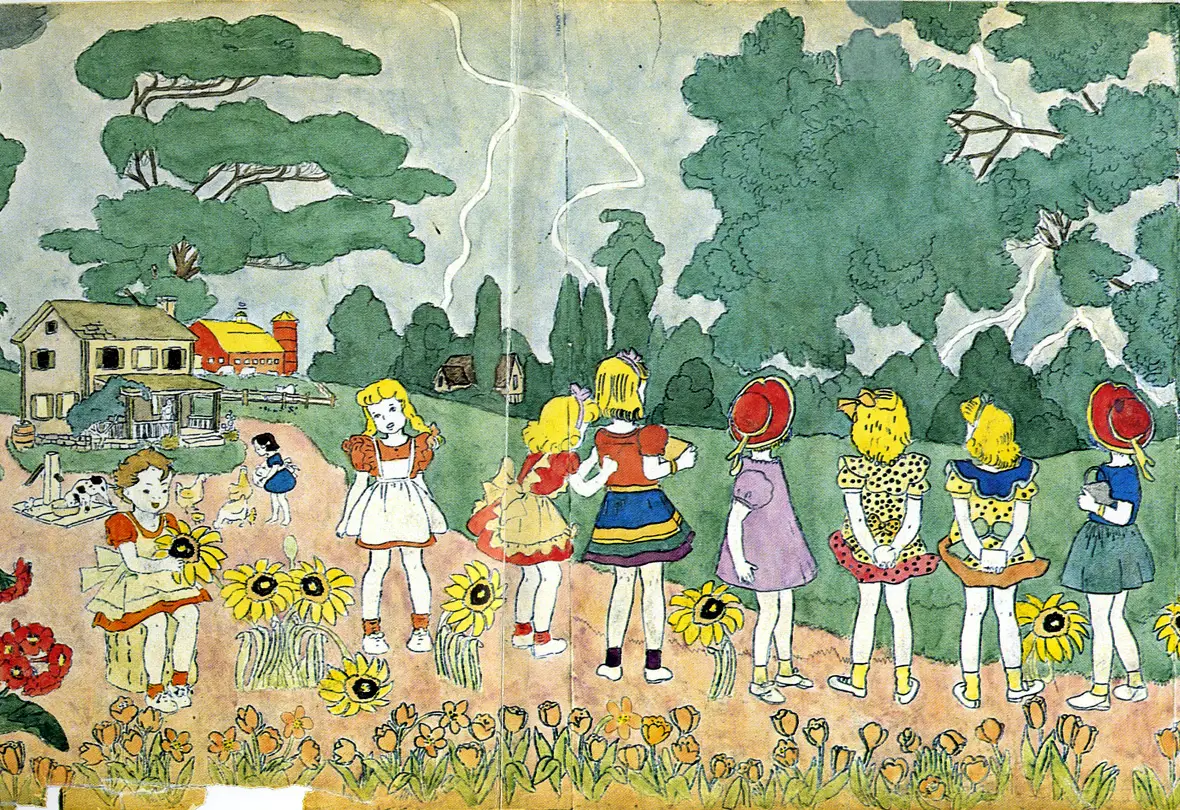
After four years in the mission, for unclear reasons, the priests who oversaw the institute decided to subject Henry to a psychiatric visit. In November 1904 Henry was examined several times by a doctor who sentenced a cryptic diagnosis. Henry's heart was in the wrong place. "And where was it supposed to be? In my belly? "Henry commented years later. In his diagnosis, however, the doctor wrote that Henry suffered from "Self-abuse", a euphemism with which at the time masturbation was considered, at the time considered a serious disorder, and which for this reason the boy had to be interned at the Illinois Asylum for Feeble-Minded Children. That is an asylum.
Henry passed five years in the psychiatric hospital, a structure that at that time was the subject of an investigation by the authorities that revealed the harsh living conditions of the inmates, the dozens of accidents due to negligence of the staff, and the abuses and inhumane punishments to which they were subjected young guests. More like a prison than a hospital, the structure housed together with the patients also inmates who had not found space in the state prisons. Henry called the asylum "The house of a thousand troubles". In his memoirs Henry never mentions the abuse and violence suffered during his years in the asylum, but years later in his stories and in his paintings he will recall what he must have witnessed and that perhaps he had also suffered. The goal pursued in the structure was to re-educate the young patients by teaching them a job. In Henry's case, he was taught to clean floors, the only job skill he will acquire in his lifetime, while in the summer he was sent to work on the hospital farm. Henry recognized that life in the hospital was hard but still better than the one he had left behind, yet he understood very well that he was not mad and that his place was not in an asylum:
"If at the time I had known the cause for which they sent me to the asylum of the children, I certainly would never have forgiven those of the House of Mercy of Our Lady and I would have avenged myself at the first opportunity. I am a retarded child. I knew more than anyone else in that shack. "
Despite this Henry attempted to escape several times and in August 1909 he finally succeeded. It took Henry two weeks to walk back to Chicago. Meanwhile his father had been dead for two years and the only relative he still had contact with was on Aunt Anne. Aunt Anne, through some of her nuns who knew her, found Henry a job as an attendant at St. Joseph's Hospital, the first hospital where Henry will carry out this work. In the years following his return to Chicago, Henry entered into a romantic relationship with a man named Whillie Schloeder. They shared their families' German origins and their Catholic faith. The two often went to Riverview Park amusement park. Henry spent a lot of time with Whillie's family, which was in some ways the closest thing to a "normal" family Henry has ever had.

Henry in the realms of the unreal
At nineteen, around 1910 Henry began writing a novel entitled The Story of the Vivian Girls, in What is Known as the Realms of the Unreal, of the Glandeco-Angelinian War Storm, Caused by the Child Slave Rebellion, or called more briefly In the Realms of Unreal. Henry will work on this novel for the next eleven years, coming to the phenomenal length of ben 15.145 typewritten pages.
The events of the novel "they take place among the nations of an unknown or imaginary world, or countries, with our earth as their moon, on an imaginary planet, a thousand times larger than our world ”. In this alternate world the atheist and slave nation of Glandelia and the Christian and free nation of Angelinia battle each other. The wicked Glandelians have for over forty years kidnapped and enslaved the children of Angelinia until they gave birth to a slave rebellion that resulted in a wider conflict. Leading the Angelinian forces into battle are the seven daughters of the Emperor of Angelinia, the Vivian Girls, seven exceptional girls, between the ages of five and seven, who together with their brother Penrod live a thousand daring adventures: they save the enslaved children, spy on the enemy, develop brilliant war strategies and go into battle alongside the adult soldiers. Henry describes them like this:
"Their beauty could never be described, but their nature and manner, and their kindness of heart, were even more graceful and spotless.. They were always willing to do as they were told, staying away from bad company, going to Mass and communion every day, and living like little saints ”.
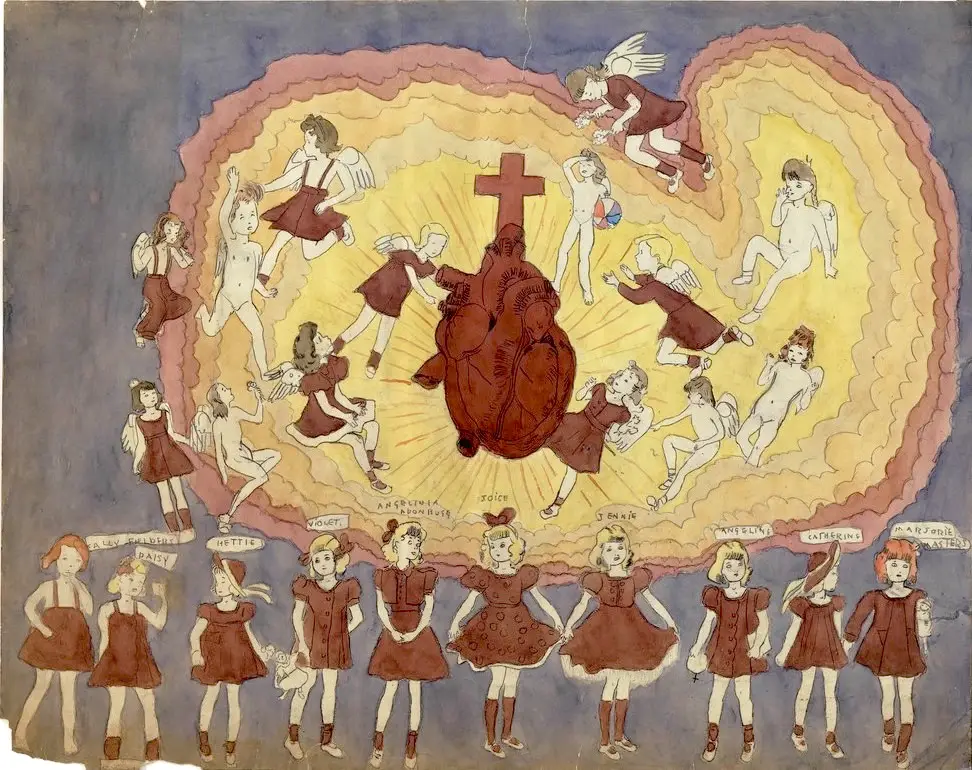
Excellent marksmen, superb Amazons and masters of disguise, they think and behave like adults despite their age and their courage is legendary. As their fellow soldier Jack Evans has to say:
“Your daring escapes, your attempts to escape, have sometimes made my hair stand on end. What you little girls dare to do would make me shiver with fear ... "
As to why he chose some heroines rather than creating a male alter ego as the protagonist, Henry had clear ideas:
"The reason there are so many heroic girls in this story is because in most circumstances women are braver than men. This is the description of the great war, and of its outcome, it is perhaps the greatest that has ever been made by an author, as far as any fictional war is concerned, which could have been titled by that name. The war lasted about four years and seven months, in this story, and the author of this book took over eleven years to detail the graphic details, and he fought day after day to ensure that Christians could win this long and bloody war."

Thus opens the novel. Despite his elementary education Henry demonstrates in the pages of the realms to possess a remarkable command of the language and an imaginative and original use of language. The narrative structure is unconventional, as the outsider art expert explains Michael Bonesteel, who edited the publication of some extracts of Darger's works, i realms are a succession of detailed descriptions of battles between the Glandelians and the Angelinians, illustrated in the smallest detail, with dozens of characters who live countless adventures:
“There is no plot that proceeds towards a climax and then a resolution but a succession of battles, compelling stories, interludes with dialogues, descriptions of cataclysms, ad infinitum”.

The one staged by Henry is a Manichean conflict, where the Glandelians represent absolute evil, beings who seem to be moved only by the impulse to enslave, kill, maim and rape. Henry realistically and crudely describes the living conditions of child slaves:
"Penrod rescued a little girl from an unventilated closet or cellar under one of the fortified shelters where she had been kept for six and a half years like a dog in a kennel. Penrod estimated the girl to be ten or eleven years old but when he found her he found that her legs were stunted and her arms and small body so emaciated that they weighed only half what a child normally weighs and deduced that they did. almost starved to death […]. When she was taken to the military hospital behind the Christian lines, the little girl could not even get on the bed. One might wonder how a civilized human being can treat a defenseless little girl the way Penrod's found one, but the enemy does not appear to be civilized. "

- child slaves are forced to work whatever their physical condition, under penalty of mutilation or death:
"Penrod also learned that in another section of the same fortifications, just because she couldn't work fast enough, a wicked Glandelin officer had unsheathed his saber and cut her hands off at the wrists, then throwing them away. "
Other children are headed for the sad fate of sexual slavery:
"The Glandelinians enslaved some little girls even for very immoral purposes, while in other circumstances it seems that they did so because the soldiers who enslave the little girls wanted a defenseless human being to abuse. "
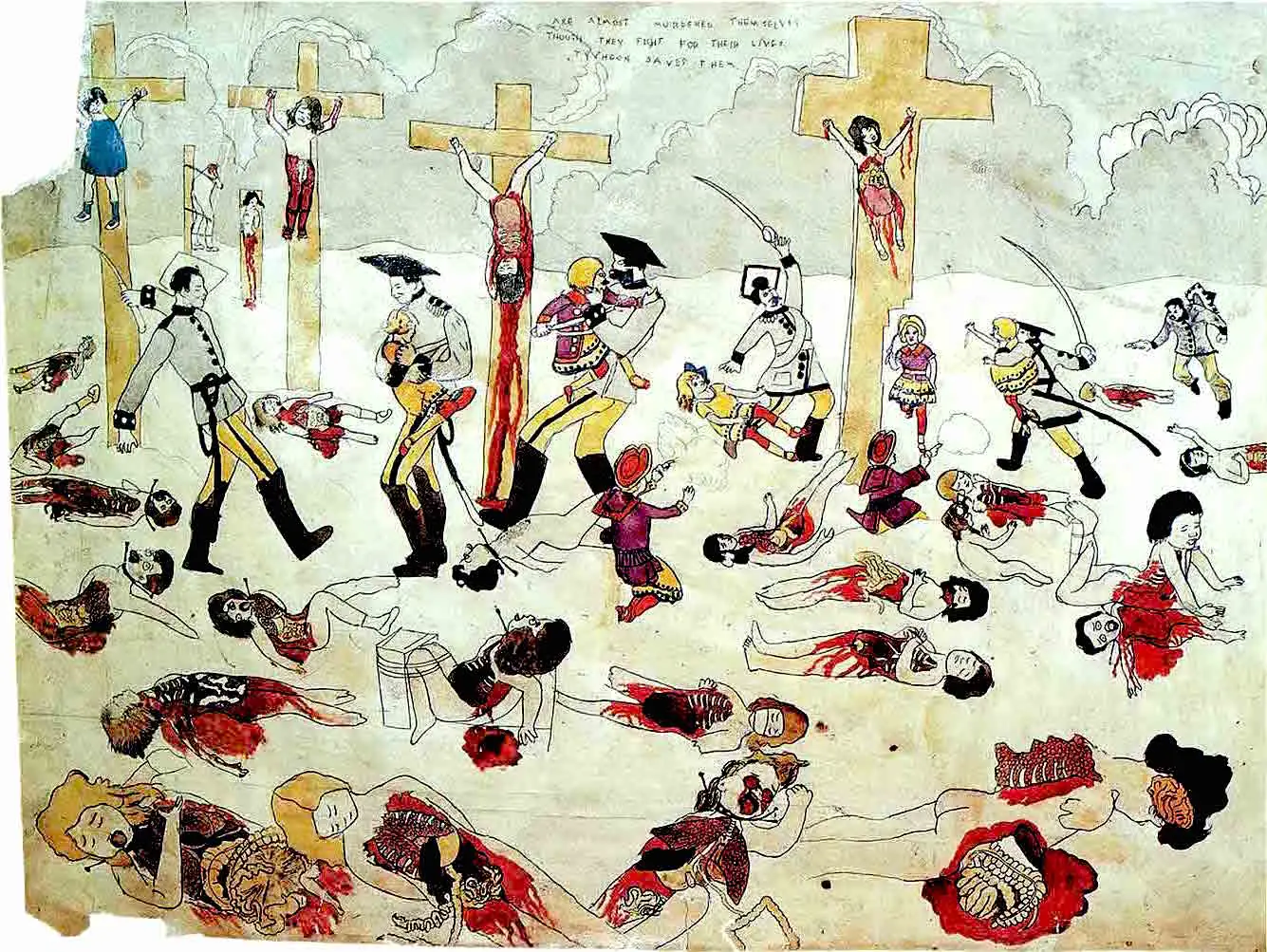
Henry devotes hundreds of pages detailing the atrocities committed by the Glandelinians. Children are strangled, beheaded, dismembered, burned alive, crucified and very often opened and gutted. This type of violence is so ubiquitous as much in the pages of the realms as in the paintings of Darger that he made the psychiatrist and art brut scholar say John M. MacGregor than Henry “Proves that he has the potential for mass murder. In any case, it is a potential that is sedated by his intense faith, by the absolute conviction of the existence and power of God. " Violence, like everything in the rest realms, has a colossal and epic scale:
"Immediately afterwards the prisoners were surrounded by an infinite tumult of angry screams, deaf to the entreaties and pitiful cries of the children to which the Glandelinians responded by sinking their sabers into their hearts. Priests were cut, maimed, and dismembered, and children terribly slaughtered around the prison yards until blood covered the streets. Everything was full of turmoil and shouts. The poor children ended up mingling with a sea of gray vests ... Many of those children fell, ripped apart, fell one after another with agonized cries, and soon a pile of corpses rose and the streets began to turn blood red flowing. Imagine the screams of those wicked Glandelinians, their faces covered in sweat and blood, the loudest screams of other women and other children begging - Mercy, oh have mercy - but there was no mercy. "
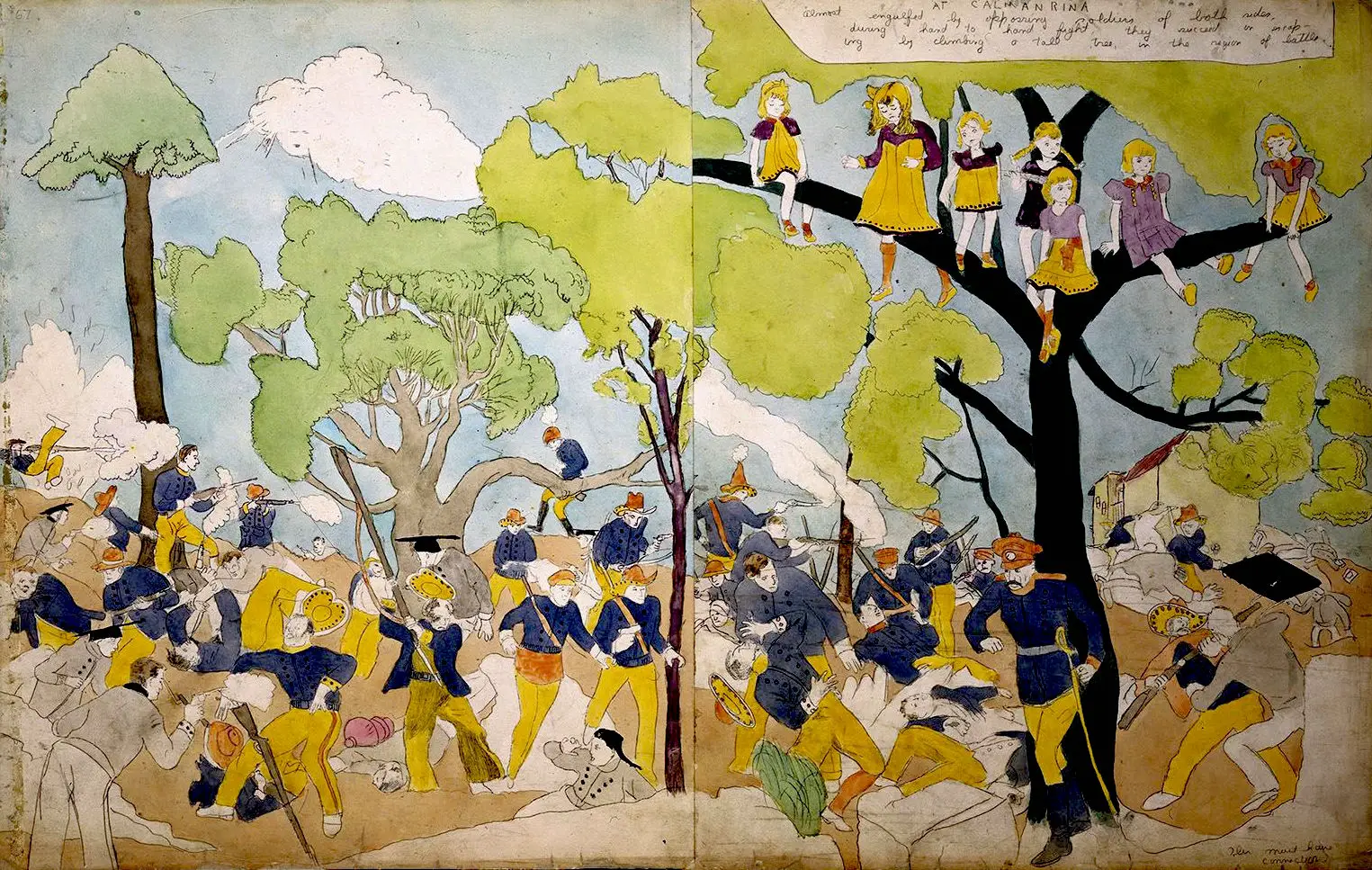
Henry modeled warfare at the heart of his novel about the American Civil War, starting with the commune casus belli of slavery. The breath of the narrative is very wide, with numerous other nations taking part in the conflict, millions of soldiers facing each other in battle, naval and submarine fleets fighting in the oceans, massacres of civilians, gigantic fires, cities looted, trains full of deportees who they whiz across the landscape and millions of refugees fleeing to Christian territories. Henry took care of the creation of this conflict in a maniacal way, coming to keep for each battle a detailed balance of the forces in the field and the respective losses and the description of the clashes occupies hundreds of pages. Henry's narrative of the war has an apocalyptic breath:
"Millions of men on both sides screamed at each other like devils, hitting each other, unleashing a deadly fire at point-blank range, mowing down, stabbing, slicing, stabbing, and raging like maddened savages determined to carry out a final butchery, and in the meantime in the midst of all this an indescribable tumult was formed, of bayonets contributing to the din, the Angelinians wavered in the fiery furnace, swayed, broke ranks and fled but undaunted they returned to thicken and pile up again, in hundreds of human waves, throwing themselves again in the mighty hell of fire and smoke […]. Ten million of them had taken part in the attack, and when the quiet came, less than two million returned ... Throughout the roar of battle, more piercing even than the howling grenades, the snap of muskets, the agonic moans of the countless bodies torn apart by grenades, the cries, the lamentations of hundreds of thousands of dead martyrs, the groans of millions of wounded Christians […]. Scenes thus revolted and filled the Vivian Girls with horror."

Although war and violence are a constant presence in the world of realms, it also has a more fairytale and carefree side that is embodied in the figures of the Blengiglomenean snakes, or more simply Blengins, human-animal hybrids of the most varied forms that populate the world of realms. There are numerous varieties:
"Human Headed Downers, called Rabona, which are the most graceful: Taporians, which are the longest, even 8000 feet (very violent); Gazoniani with Fairy Wings, and Gazoniani with Angel Wings, in both cases with butterfly wings; and the Crimacean Gazooki with Dog and Cat Heads, hideously ugly. Everyone is called Blengins for short. "
The Blengins love children and fight to protect them against the Glandelinians:
“Already in 1188, the creatures had shown a greater affection for children of all nations, such as to exceed the love of any mother. Because they somehow became aware of the existence of God, they are sure that any man, no matter what nation, who mistreats a small child, for whatever reason, is not only an enemy of children, but also of God. There is no one who, having harmed a child, can be considered safe in their presence. "
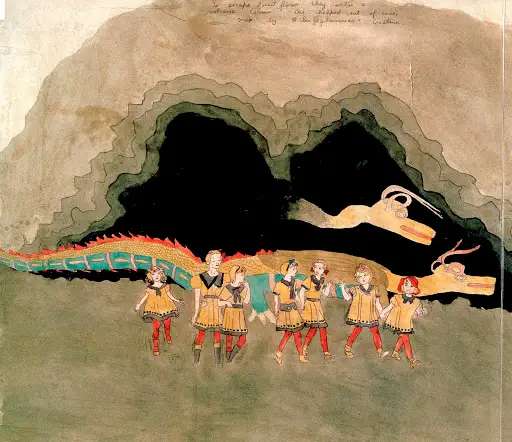
Elsie Paroubek and the "Aronbourg mystery"
Henry inserted into the realms people and places in his life. For example a boy who persecuted him at the time of the Mission, John manley appears in history as one of the Glandelian generals, the same fate touches a certain Thomas S. Pelhan, a man who had been Henry's roommate for some time, guilty of calling Henry's work trash and throwing the first draft in the trash. On the other hand, people with whom Henry was on good terms or who had left a good memory in him, such as Whillie, appeared as allies of Angelinia and the Vivian Girls. Henry appears as a heroic Angelinian general, but a series of events from his real life will set an unexpected turn in the story.
On April 1911, XNUMX, Elsie Paroubek, a child daughter of Bohemian immigrants disappears into thin air. The event deeply affects public opinion, and in Chiacago there is a great mobilization to find the little one. Exactly one month later, on May 1911, XNUMX, Elsie's body is found in the waters of a canal not far from the family home. The mystery of the child's death it will never be fixed. Henry was able to follow the story in the newspapers, and from one of them he cut out a photo of Elsie, a photo that apparently had a special meaning to him. In July 1912 Henry lost Elsie's photo and this threw him into the darkest despair. This event from Henry's real life traumatically reverberated in the literary universe of realms. Elsie became the baby Annie Aronbourg a little girl who "qhen the Revolution of Child Slavery broke out this little girl was elected commander by the rebellious children and because of her prowess she made way in a short time. " Annie becomes a martyr to the children's revolution when she is killed at the hands of Pelhan.
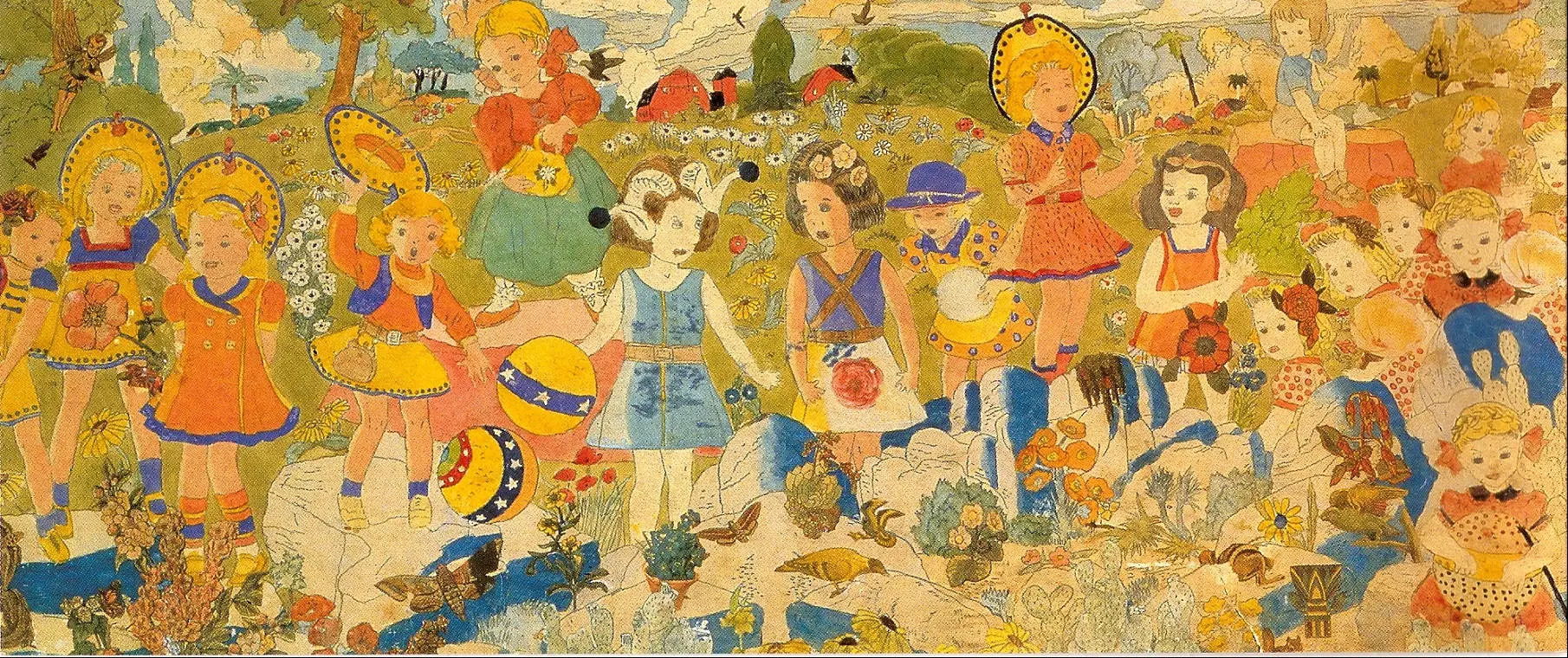
Finding the photo was imperative for Henry: in reality, as a good Catholic, he prayed to God to do it find the photo. He prayed, made little flowers, and even made a small altar in his garage, but his photo didn't pop out. Even in the world of realms Henry's alter ego was looking for the photo. "That little girl and I had been great friends and I really wanted to have a memory of her The characters, in a bizarre meta-narrative moment, seem to be aware of it. "Everything is to be attributed to that Darger and his old photograph " General Vivian says. "How can I find her Excellency "Henry replies. "I have tried with various means by occupying the Glandelin Public Libraries and similar places but without success. Since it is permissible in war I would have taken possession of the tome of the bound newspapers where the photograph appeared, but I could not find it despite having examined book after book. "
The issue of the lost photograph influences the war and the characters are aware of this too, so much so that General Vivivan asks for clarification on the author himself: "So why is the loss of the photographs […] also responsible for the situation of this war? ”. To which Henry replies that it is a mystery to him too. The mysterious relationship between this story and the plot of the realms she will be baptized by Henry "Arounbourg Mystery". The months passed and there was no trace of the photograph. Henry's frustration grew and so he wrote in his diary about him:
"October 1912. Prediction and Threat. Despite the new situation of the war, the request must be accepted before March 21st. Otherwise there will be a turn in favor of the enemy. "

Thus the loss of the photo caused an abrupt change in the universe of realms, which became even more dark and violent. Henry writes again:
"The loss of Arounbourg's photograph caused terrible disasters during the battles, the torment suffered by the Vivian Girls, and the bestial fury of the great war."
At the height of this bizarre intertwining between reality and fiction, Henry, after so many unheard prayers walked away from the church in reality, while in the world of realms betrayed the Vivian Girls and Christian armies to join the Glandelin forces:
"I am an enemy of the Christian cause, and with all my heart I wish to see that their armies are crushed! I will try that the victory of the war is on the side of the Glandelinians. The results of too many unfair tests. I will not tolerate them for any reason, even at the risk of losing my soul, or causing the loss of many others, and there will be vengeance if the trials continue! God is too hard on me. I will no longer bear all this and for anyone! May he send me to hell, I am my own master. "

Prejudice of resentment towards God and the world, Henry unleashed on the inhabitants of the realms a storm of violence and cruelty increasingly brutal, staging a holocaust of cyclopean dimensions: "About 56.789 children were literally ripped apart like beasts for slaughter. " The carnage by the Glandelinians goes on for hundreds and hundreds of pages.
How Henry is not known returned to the bed of Catholicism, but we know how his alter ego is realms he redeemed himself and returned to the side of the good. In the novel, Henry encounters Annie's ghost several times, which will gradually bring him back to the right path:
"The fourth time I met her, and the last was at Aronburg's Run, after witnessing all of her indescribable horrors. This time she was dressed like a celestial creature, and she appeared to me smiling for a moment and then disappeared. I have not seen her since but now I have joined the Christian armies, I am an officer, and I have led one of the most ruthless charges in Logan Zoe Rae Run ... "

Henry Darger, Artist
Alongside Henry's immense literary production, there is the artistic one, equally substantial and original. They were found in Henry's room about three hundred drawings. Composed of several sheets glued together, some of these paintings, similar to tapestries, even reach i three meters long. To save on material Henry painted the sheets on both sides.
Henry was also self-taught in drawing and over the years he came to develop a unique personal technique, which combined collage and tracing. Henry's room was indeed full of clippings from newspapers and magazines that Henry found in the garbage or in the waiting rooms of the hospital where he worked. Photos of children, soldiers, and royals of Europe, clipped from magazines such as Life, Saturday Evening Post e National Geographic. At first Henry was pasting and editing these images, but soon he began to trace them. With this method Henry could reuse the same image several times, multiply and modify it as needed. In a sense, everything we see in Henry's works are images extracted from their original context and dropped into a new one where they take on a new sense and meaning. Each composition is made up of dozens, in some cases hundreds, of images reassembled on the sheet.
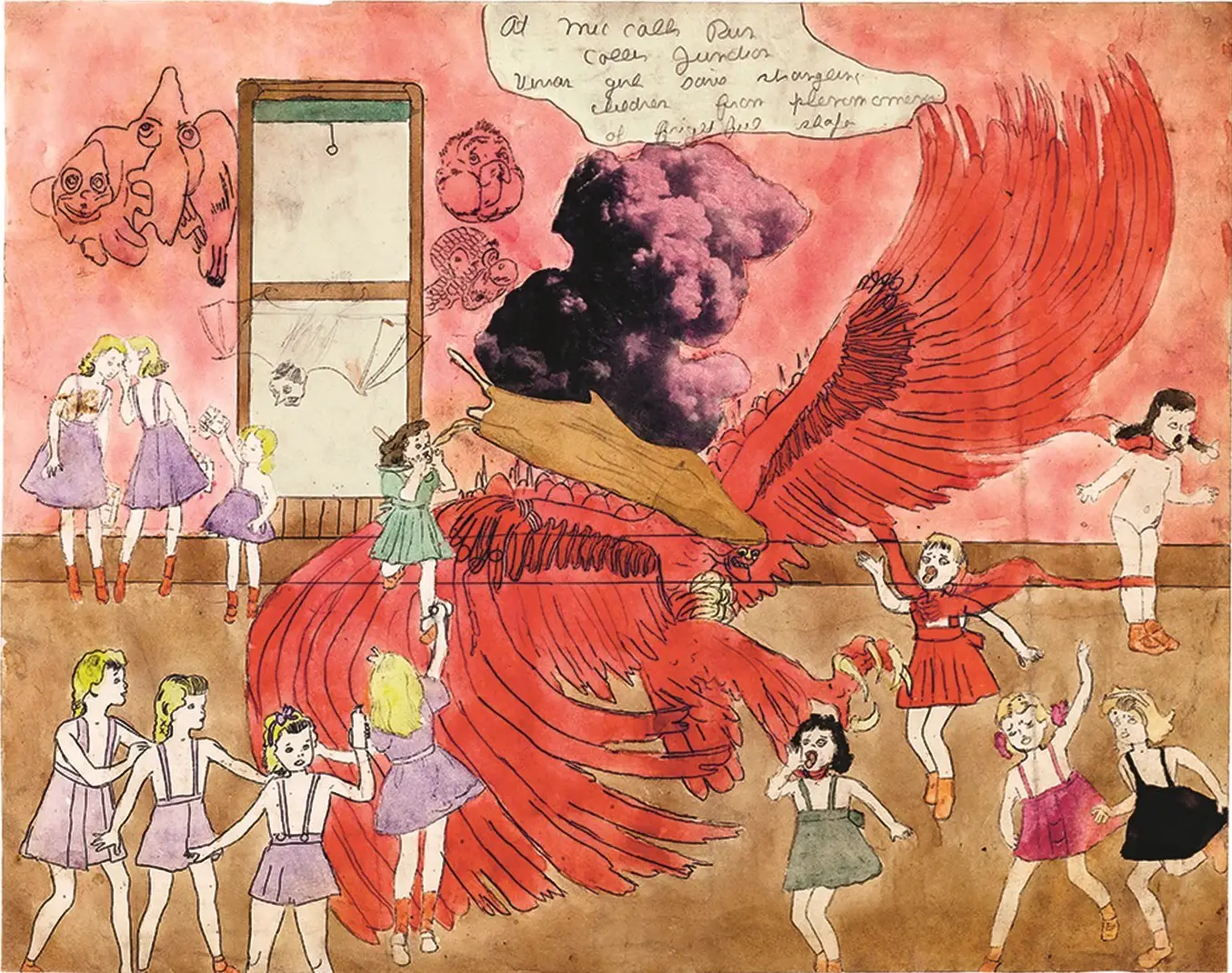
Henry's drawings can be divided into two large groups. The first group is that of the paintings they illustrate battle scenes, maps, portraits of officers or in any case episodes of the novel, while the second group collects a series of drawings, the largest in size, which portray scenes that can ideally be placed after the end of the war at the center of the Realms. In these drawings children play happily in bucolic landscapes, there are no enemies in sight and violence is completely absent. A large number of Blengins mingle with the children, and the hideous Glandelian statues of soldiers strangling children are thrown into the flames. The Vivian Girls are often portrayed naked and, curiously, Henry draws them with penises. This series of works are the most impressive and complex among those created by Darger, the image of an Eden of children in which they would redeem all the sufferings they endured. McGregor writes about Henry's drawings:
“The profound synthesis obtained by Darger with collages, the use of underrated and ephemeral sources, and the creation of a vast mythological structure capable of containing them, was made possible only thanks to a state of perennial spiritual and artistic innocence; an 'altered state', perhaps pathological, like the world that Henry Darger described in "In the Realms of the Unreal" was.

Surely Henry was a kid inside all his life, and it is likely that the fantasies underlying the realms date back to the years of the mission and then of the asylum. The war Henry wrote about was the fantastical transfiguration of all the traumas he had faced in his life, starting with his denied childhood. In this sense, the works we talked about above must also be seen, a sort of Earthly Paradise which is ultimately an idealized vision of childhood itself. Surely in his suffering Henry was an exceptional individual, who despite all his cultural limitations, showed an extraordinary creative vein and an extraordinary dedication to art. MacGregor also sums up the paradox of Henry's entire biographical story well:
"Now, however, we must contemplate the possibility that Darger was a repressed genius; a potential giant on an intellectual and creative level. What happens to a genius if the environment that surrounds him, family, education, school training, the way of earning a living, and the sense of his own identity do not allow him to grow and develop? It is undoubtedly an enormous deprivation on a sensory, emotional and intellectual level. I would like to suggest that even in such a situation, hopefully rare, true genius cannot be destroyed. However, he is directed towards unusual channels. "
In light of this last consideration and the fortuitous circumstances of the discovery of Henry's art, one wonders, How many other Henry Dargers are there we don't know about yet?

Bibliography:
Henry J. Darger, In the Realms of the Unreal by John M. MacGregor
Henry Darger: Throwaway Boy, The Tragic Life of an Outsider Artist by Jim Elledge
In The Realms of Unreal (2004) by Jessica Yu (Documentary)

2 comments on “In the Realms of the Unreal with Henry Darger and the Vivian Girls"